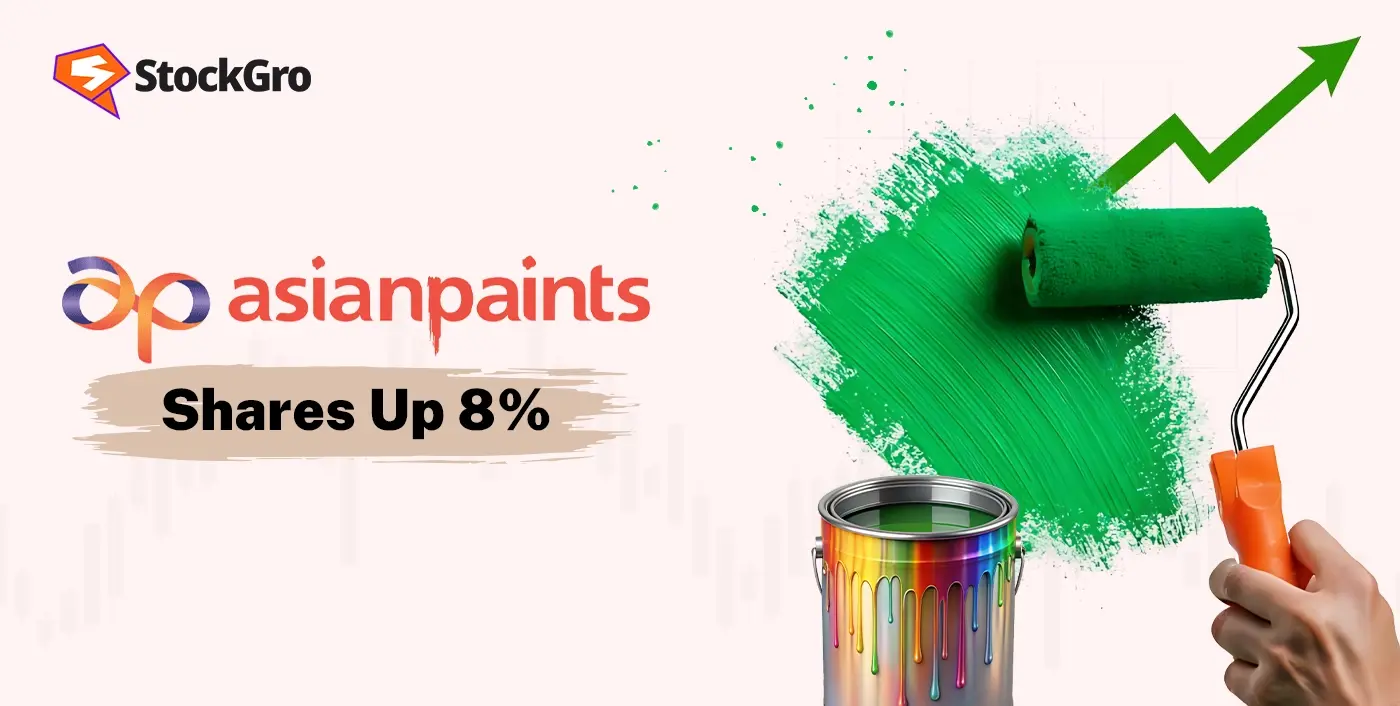
Asian Paints, one of India’s largest and most recognized paint manufacturers, has recently seen its shares rise by an impressive 8.3% in just a week. This surge has sparked considerable interest among investors, especially considering the external challenges the company faces, such as an ongoing probe by the Competition Commission of India (CCI) into alleged market abuse. But what’s driving this rise? Let’s break it down.
Why are Asian paints seeing a surge in share price?
In the past week, Asian Paints shares have gained 8.3%, including a 1.8% increase on Thursday alone. The stock’s rise comes amid a drop in global crude oil prices, which directly impacts input costs for companies in the paints sector, like Asian Paints. As crude prices decline, the company’s production costs decrease, potentially boosting its margins and profitability. On Thursday, Brent crude was priced at $68.87 per barrel, showing a slight drop of 0.35%. This fall in global oil prices provides the perfect backdrop for a short-term rally.
Technical indicators backing the rally
From a technical perspective, Asian Paints shares are performing relatively well. The stock is trading above seven of its eight key simple moving averages (SMAs), ranging from the 5-day to the 150-day moving averages. The Moving Average Convergence Divergence (MACD) stands at 19.2, suggesting the current bullish trend could continue in the near term.
However, the stock is showing signs of being in the overbought territory, as the Relative Strength Index (RSI) is currently at 70.5. When RSI exceeds 70, it typically signals that the stock is overbought, indicating a possible pullback in the short term.
The regulatory storm: will it dampen the momentum?
Despite the positive momentum, Asian Paints is not without its challenges. The company is currently under investigation by the CCI, which recently ordered a probe into allegations that the company had abused its dominant market position. A complaint filed by Birla Opus, the paint division of Grasim Industries, claims that Asian Paints imposed unfair conditions on dealers and used coercive tactics to gain an advantage.
The CCI’s preliminary findings suggest that Asian Paints might have violated competition laws by offering exclusivity agreements to dealers, raising sales targets for those stocking Birla products, and engaging in exploitative behavior. Asian Paints has yet to respond to the investigation fully but has stated that it will cooperate with the authorities.
Also read: Tata Steel Shares Gain 16% in 2025 After Port Talbot Project Update
Historical performance and long-term outlook
Looking at Asian Paints’ performance over the past few years, it’s clear that the stock has struggled to deliver consistent returns. From July 2021, when the stock was trading near Rs. 3,000 per share, it surged to an all-time high of Rs. 3,576 in August 2022. However, the gains have been short-lived, and since then, the stock has seen a steady decline.
As of July 3, 2025, the stock is trading at Rs. 2,439, which is a 16.6% drop compared to the same period last year. Additionally, it’s down almost 6% year-to-date. The company’s recent earnings report for Q4 FY25 painted a bleak picture, with a 45% year-on-year drop in net profit to Rs. 692 crore and a 4% decline in revenue.
Also read: Raymond Realty Share Price Soars 5% on Market Debut Post Demerger
The competitive landscape: a new challenge for asian paints
The competitive landscape for Asian Paints has become increasingly challenging. New entrants such as JSW Paints, Grasim’s Birla Opus, and Pidilite’s Haisha Paints are making their mark, intensifying the competition in the decorative paint market. These new players have started to disrupt pricing, creating a challenging environment for Asian Paints, which has traditionally dominated the sector.
Furthermore, the entry of these players and increased competitive activity in the premium segment could put further pressure on Asian Paints. Its market share and profit margins, which have historically been a strength, may now be at risk.
Current Scenario- Asian Paints Share
Given the recent developments, the question on many investors’ minds is whether to buy or exit Asian Paints’ stock. On the positive side, the company’s strong brand equity, established supply chain, and dominant position in the market continue to make it an attractive stock for long-term investors. Additionally, the potential for a recovery in demand and lower raw material costs could benefit the company in the coming months.
However, the current regulatory scrutiny and increasing competition are serious factors to consider. The stock has been down by 28% from its peak, and while technical indicators show a short-term bullish trend, long-term investors might need to reassess their positions.
Also read: Raymond’s demerger and the rise of Raymond Realty
Conclusion: A Volatile But Promising Stock
In conclusion, while Asian Paints’ recent surge may offer a glimmer of hope for investors, the stock is still in a volatile phase. Regulatory challenges and fierce competition present risks, but the company’s fundamentals remain strong. If you’re an investor, it might be a good idea to stay updated on the CCI probe and industry developments before making any major decisions.

